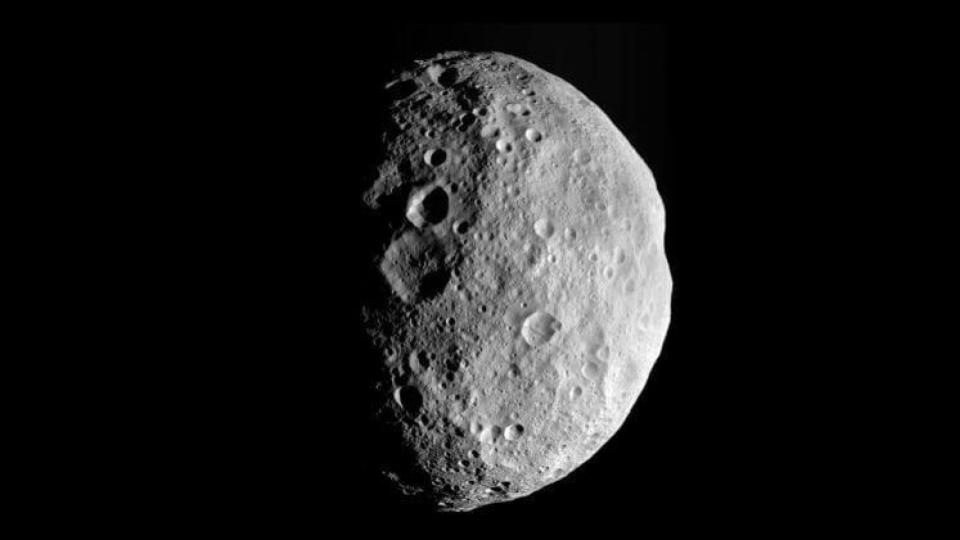
Let’s take a look at Vesta, the number 2 asteroid in the main belt and the largest of the “not even a dwarf planet” objects in the inner solar system. This 525 km across rock was imaged in detail by the Dawn mission and can be chemically studied thanks to a wealth of meteorites that have been broken off through past impacts and flung at Earth. In a new paper in Geochimica et Cosmochimica Acta, scientists study the history of Vesta by looking at these samples and the craters they may have come from.
The lab analysis of these meteorites showed that Vesta was volcanically active for 30 million years after its formation 4.6 billion years ago. It wasn’t anticipated that this small of an object could have volcanism for this long. In general, the heat needed for liquid magma to exist is either left over from the formation of an object or comes from the decay of radioactive elements, like aluminium 26. By the time 30 million years had passed, all that aluminium would have decayed away. In trying to explain the prolonged volcanism, they speculate that maybe magma survived in slower-cooling regions of the asteroid’s crust.
This is all cool, but it actually isn’t the most interesting part of this research. The cool part is in how those magma-turned rock samples made it to Earth. It turns out that about 1 billion years after its formation, Vesta experienced a large impact that dug a deep crater where those volcanoes had been, and tossed samples of that region our direction. They weren’t all flung this way randomly, however. The team behind this paper, led by Fred Jourdan, believe all that dug up debris would have formed a rubble-pile asteroid – think Bennu or Ryugu – and this configuration protected the material until in recent times it could get knocked off, and sent to Earth as meteorites.
So, to sum this crazy tale up, 4.5 billion years ago, Vesta formed, and for 30 million years it had active volcanoes. At some point after the volcanism turned off, something large hit Vesta right were those last erupting volcanoes had been located, and that event carved up a massive amount of material. That material THEN gravitationally came together to form a rubble pile asteroid that protected the rocks from those volcanoes for billions of years, until something knocked them off and sent them to Earth, where they were found by someone among all the other rocks on our planet, identified as a meteorite, and chemically matched to the composition of Vesta, then studied… and now published in a research paper.
For more details, check:
Turbulent times revealed on Asteroid 4 Vesta (Curtin U)




 Join the Crew!
Join the Crew!
 Escape Velocity Space News
Escape Velocity Space News
0 Comments